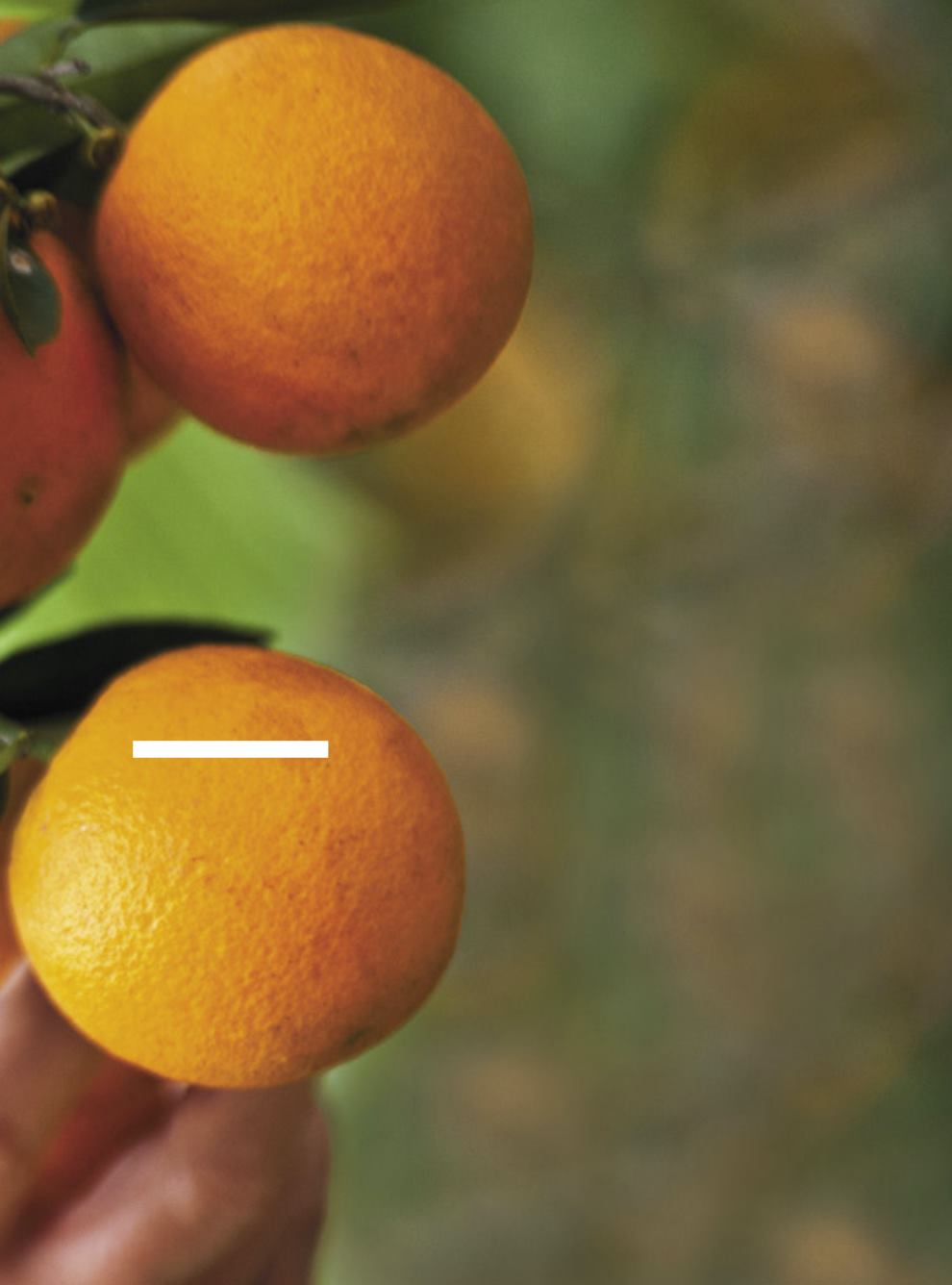
Inor Ag. Assmann
41
The states that produce expressive
amounts of oranges near the borders of the
leading producer, São Paulo, reveal confi-
dence in the activity. Minas Gerais, as em-
phasized by the Secretariat of Agriculture,
Livestock and Supply, has increased its share
in the total amount produced in Brazil, from
4.17% to 6.4% in area and from 4.41 to 6.1%
in production, from2010 to 2015, fromdata
released by the Brazilian Institute of Geogra-
phy and Statistics (IBGE), though in 2016
some reduction is likely. In 2015,
the highest level was registered,
with 987 thousand tons. Ba-
sic revenue derived from
it amounted to R$ 410
million in 2014.
The
so-called
Triângulo Mineiro,
in Western Minas
Gerais, concentrates
71.34% of the area
and 73.97% of the
production volume,
considering the num-
bers from the North
and Northwest, whilst
the South is home to anoth-
er very significant region, with re-
spective percentages of 13% and 12% of
the total and of the entire crop. All ma-
jor orange producing municipalities (Co-
mendador Gomes, Frutal and Prata) are
located in the territory comprised by the
region known as Triângulo.
Paraná, in turn, now in the fourth posi-
tion, according to the latest projections by
the IBGE, jumped to the third place in 2014,
with 979.7 thousand tons. The federal sta-
tistics organ projects smaller volumes in the
subsequent years, 900.9 and 810.9 thou-
sand tons, respectively. On the other hand,
the State government, based on data from
the Rural Economy Department (Deral), of
the Secretariat of Agriculture and Supply
(Seab), releases the same number for 2016,
but 726.6 thousand tons are used as a ref-
erence of the previous year, a fact that leads
to the 11.6 percent increase in production.
The same source maintains that the val-
ue of the gross product, the leading one in
Paraná’s fruit business, cultivated in about
100 municipalities, especially in the North-
east region (Paranavaí, Maringá and Lond-
rina), this year will rake in revenue of R$
277 million, the highest in the past de-
cade. The activity is also responsible for
the generation of three thousand jobs, ei-
ther direct or indirect ones, putting into
operation three juice industries. “It is one
of the most competitive in the Country,
with more productive orchards, technolo-
gy, investments and public support, by the
Paraná Agronomic Institute (Iapar) and by
the Agricultural Defense Agency (Adapar)”,
says José Croce Filho, coordinator at the
area at Adapar. He adds that the good mo-
ment for the prices favors the resumption
of plantings throughout the State, where
the renewal rate should reach 1.5%, in 2016.
Neighbors of the
leading producer,
São Paulo, they take
advantage of the
weather conditions
and the proximity
to the biggest
consumer center
In the surroundings
of
São Paulo


